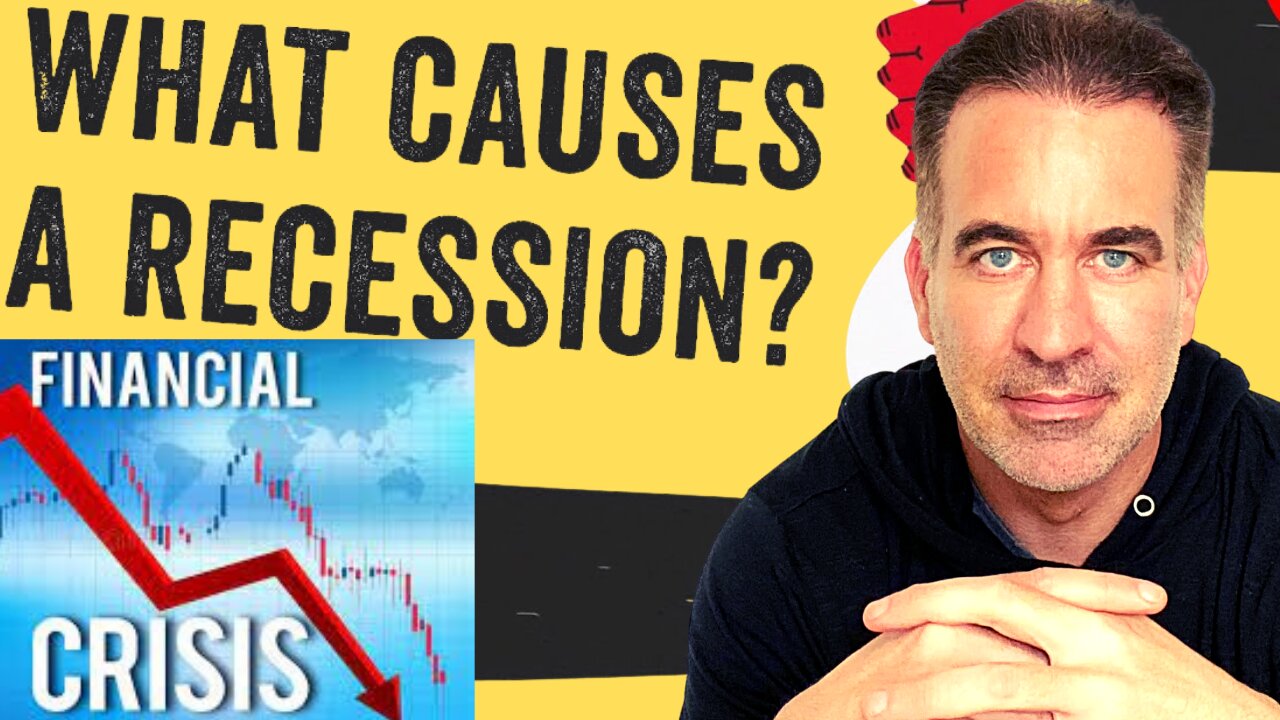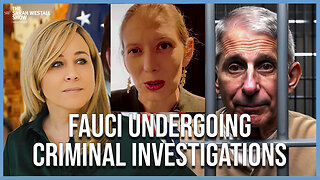Premium Only Content

WHAT CAUSES A RECESSION?
WHAT ARE THE RAMIFICATIONS OF ALL THIS MONEY PRINTING! FAKE ECONOMY?
*BUY BITCOIN EVERY WEEK AND REAL ESTATE!
Like an unwanted dinner guest, inflation has become impossible to ignore. And it’s likely to be even harder to get rid of. It’s going to cost consumers more to put together a traditional Christmas dinner than at any time in recent memory.
In November, the Consumer Price Index showed a 6.2% increase in inflation for October. It hadn’t made a jump like that in three decades.
However, if you put gas in your car or buy groceries you’ve known that inflation has been here for some time. And with more than $1 trillion in government spending about to hit the economy, inflation is only going to increase.
That’s not just our opinion. Even economists who are favorable to the current administration acknowledge that more government spending will only cause inflation to increase.
That means now is the perfect time to take a prudent step to protect your portfolio from the effects of inflation. And that means investing in precious metals. Throughout history, precious metals have been a safe haven asset and a hedge against inflation.
Precious metals have lost a little of their luster in the age of cryptocurrency. And if you’re a crypto investor, you should continue to do so. Fighting inflation doesn’t have to require an either/or approach. This is one time where “both/and” may be the perfect strategy. A growing cryptocurrency market doesn’t change the value of precious metals.
If you prefer to buy physical metal, that’s not a bad strategy. But many investors prefer to get exposure to precious metals that doesn’t require taking possession of, or having to sell, the physical metal.
In economics, a recession is a business cycle contraction when there is a general decline in economic activity. Recessions generally occur when there is a widespread drop in spending (an adverse demand shock). This may be triggered by various events, such as a financial crisis, an external trade shock, an adverse supply shock, the bursting of an economic bubble, or a large-scale anthropogenic or natural disaster (e.g. a pandemic). In the United States, it is defined as "a significant decline in economic activity spread across the market, lasting more than a few months, normally visible in real GDP, real income, employment, industrial production, and wholesale-retail sales".[3] In the United Kingdom, it is defined as negative economic growth for two consecutive quarters.
Governments usually respond to recessions by adopting expansionary macroeconomic policies, such as increasing money supply or increasing government spending and decreasing taxation.
In a 1974 The New York Times article, Commissioner of the Bureau of Labor Statistics Julius Shiskin suggested several rules of thumb for defining a recession, one of which was two consecutive quarters of negative GDP growth.[6] In time, the other rules of thumb were forgotten. Some economists prefer a definition of a 1.5-2 percentage points rise in unemployment within 12 months.
In the United States, the Business Cycle Dating Committee of the National Bureau of Economic Research (NBER) is generally seen as the authority for dating US recessions. The NBER, a private economic research organization, defines an economic recession as: "a significant decline in economic activity spread across the economy, lasting more than a few months, normally visible in real GDP, real income, employment, industrial production, and wholesale-retail sales".[8] Almost universally, academics, economists, policymakers, and businesses refer to the determination by the NBER for the precise dating of a recession's onset and end.
In the United Kingdom, recessions are generally defined as two consecutive quarters of negative economic growth, as measured by the seasonal adjusted quarter-on-quarter figures for real GDP.[4][5] The European Union does not use this definition, instead of using a range of other criteria such as employment rate and the depth of decline in economic activity.
A recession has many attributes that can occur simultaneously and includes declines in component measures of economic activity (GDP) such as consumption, investment, government spending, and net export activity. These summary measures reflect underlying drivers such as employment levels and skills, household savings rates, corporate investment decisions, interest rates, demographics, and government policies.
Economist Richard C. Koo wrote that under ideal conditions, a country's economy should have the household sector as net savers and the corporate sector as net borrowers, with the government budget nearly balanced and net exports near zero.
A severe (GDP down by 10%) or prolonged (three or four years) recession is referred to as an economic depression, although some argue that their causes and cures can be different.
-
 1:14:04
1:14:04
NONCONFORMING-CONFORMIST
1 year agoYOU HAVE TO PAY A LOT AND IN SO MANY WAYS TO TAKE PART IN THIS WORLD
502 -
 6:50:59
6:50:59
SpartakusLIVE
10 hours agoDuos w/ Woes || Verdansk GRIND that NEVER stops
61.1K1 -
 2:51:57
2:51:57
vivafrei
15 hours agoEp. 262: Shiloh is COINTELPRO 2.0? The "Woke Right"? Trump's Ukraine, Iran Deal! Canada Stuff & MORE
130K177 -
 1:52:05
1:52:05
IsaiahLCarter
14 hours ago $2.79 earnedAPOSTATE RADIO #013: Congestion Pricing is For The Dogs (feat. Charlie Panoff, Danny Perlstein)
29.2K13 -
 1:52:17
1:52:17
KINGKILLJ0Y
5 hours agoWhen it's DARK....it's time for RANK! //🔴LIVE
22.9K4 -
 2:06:49
2:06:49
Tundra Tactical
7 hours ago $7.94 earnedStar Wars Blaster Rankings and Other Galactic Gun News On The Galaxies Okayest Gun Live Stream
39.9K2 -
 2:09:29
2:09:29
Nerdrotic
9 hours ago $14.32 earnedAncient Precision Stone Vases Discoveries | Forbidden Frontier 100
66.7K6 -
 5:44:01
5:44:01
EricJohnPizzaArtist
8 hours agoAwesome Sauce PIZZA ART LIVE Ep. #46: Celebrating ONE YEAR on RUMBLE and Star Wars Day!
54.5K5 -
 6:53:09
6:53:09
iCheapshot
8 hours ago $3.10 earnedSunday Funday | Warzone Vibes
28.7K5 -
 54:50
54:50
Sarah Westall
8 hours agoTwo States Start Criminal Investigations against Fauci and Friends w/ Attorney Rachel Rodriguez
47.9K50